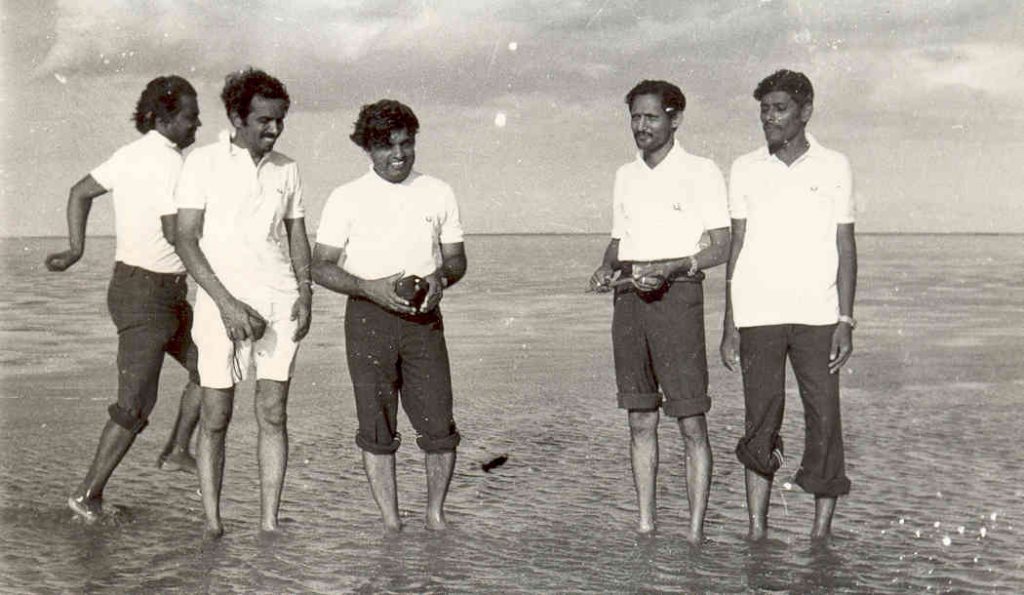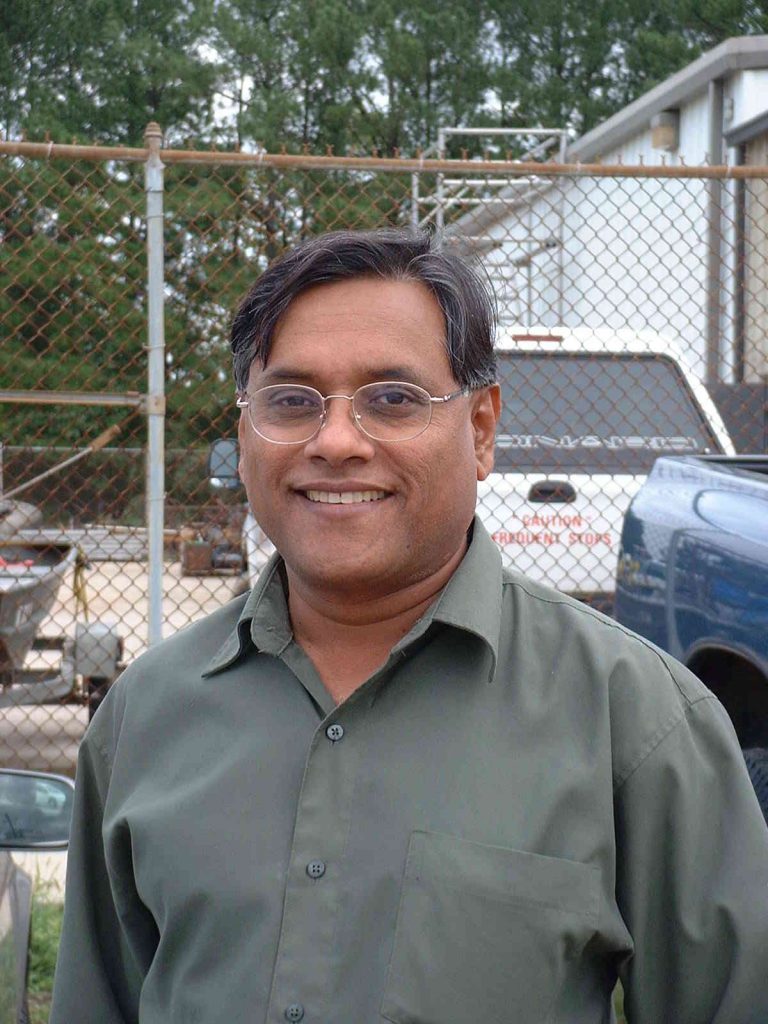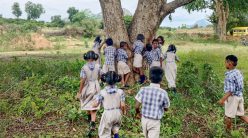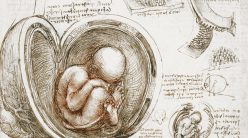Syed Ameenulla, who joined IISc as a lab assistant and went on to be a scientific officer, recalls his involvement in the Institute’s monsoon experiments

In the monsoon of 1979, Chandipur beach in Balasore, Odisha was host to a small group of researchers from Bangalore. The team, from IISc and the National Aeronautical Laboratory (NAL), were setting up a 10-metre tower fitted with instruments, coinciding with the international Monsoon Experiment (MONEX). Sometime during their six-week stay, researchers from the US based further up the coast at Digha visited their Indian counterparts.
“They were really surprised,” says Syed Ameenulla, who was at the time a lab assistant in the Department of Aeronautical (later Aerospace) Engineering, IISc. The US researchers, who were recording their analog data on magnetic tapes, had found that the Bangalore team had digitised their data acquisition using a microprocessor and had more sensors. Ameenulla was part of the team led by A Prabhu (then an assistant professor) and BS Adiga (of NAL) that had designed and installed this computerised system for acquiring data from the instruments on the tower. Their experiment, initiated by Roddam Narasimha and named the Monsoon Boundary Layer Experiment (MOBLE), aimed to take measurements of the atmospheric boundary layer.
They had implemented “the first microprocessor-driven surface layer instrumentation system in the world”
Ameenulla, however, was soon making his way back to Bangalore, to the University Visvesvaraya College of Engineering, for his practical exams as part of the BE in Electronics Engineering he was pursuing part-time by attending evening classes. Having arrived at IISc with a diploma in sound engineering, he went on to become a Scientific Officer after his BE, wrote his Master’s thesis based on his work on the instrumentation for the Monsoon Trough Boundary Layer Experiment (MONTBLEX) of 1990, and left in 1999 for the US. He retired in 2016 as the North Carolina State Climate Office’s Associate Director and manager of its network of observation towers.

It was in 1974 that he joined as a lab assistant to BR Ramaprian, assistant professor in the department, tasked with developing instruments for boundary layer turbulence measurements in the wind tunnel. When Ramaprian left IISc, Ameenulla joined Prabhu, and was part of a small group in the department interested in the atmospheric sciences as well as wind tunnel experiments in the lab. MOBLE was the first of a series of field experiments that this group undertook to study the monsoon and the atmospheric boundary layer.
As a later paper put it, they had implemented “the first microprocessor-driven surface layer instrumentation system in the world.” But it began inauspiciously. The tower and the instruments, all designed in-house, were sent to Balasore. “Prof Narasimha had left Bangalore early,” Ameenulla recalls, “to receive the tower and make the local logistics arrangements.” But floods in Andhra Pradesh meant that the mast from Bangalore, sent by road, did not reach Balasore. Narasimha and another member of the team, K Narahari Rao, managed to get a substitute tower locally made.
There were more hiccups in store. The tower was set up about half a kilometre from the coast, and could be approached only during low tide. Often, before they could finish working on the instruments, the high tide would set in. “I would be the first person to get out before the water reached my belly – because I am not a good swimmer – and Prof Prabhu was the last, getting out by swimming each time.” On one such occasion, the high tide took away Ameenulla’s footwear. “Prof Prabhu offered his footwear to me,” Ameenulla recalls, “which was very touching.”
The instruments on the tower that they initially installed, at three different heights, started sending data, but not for long, as the communication cable to the shore was being corroded by the sea water, eventually cutting off the data transmission altogether. That wasn’t all. “During low tide we found that the 60 Ampere-Hour battery was taken away by the high waves – which sometimes pounded our room on the shore too,” says Ameenulla. “We had to find on-site solutions, which we did successfully.”
Throughout the experiment, Narasimha kept everyone in good spirits, says Ameenulla, and such was his enthusiasm that he was to be found climbing the tower to check on the instruments himself, despite entreaties from the others to leave that task to them. “He never ordered me to do anything,” remembers Ameenulla. “Rather he would discuss with me the need and purpose of an experiment in detail so that I can understand thoroughly and work on it. This is how I gained more knowledge from him to be as I am today.”
Their departure from Balasore was not without incident either. All the instruments were packed into large boxes, and the group were waiting on the railway platform, knowing that the train stops at the Balasore station for only a handful of minutes. “At the last minute there was an announcement that the train would arrive on a different platform,” recalls Ameenulla. “We were shocked and started carrying the big boxes – each box on two heads – climbing the overbridge to get down on the other platform. We were halfway through when the train started moving. One of us got inside the train and pulled the chain, and the train conductor watched helplessly as we walked with the luggage on our heads!”
MOBLE was followed by another tower experiment during the total solar eclipse in 1980. Ten years later came MONTBLEX, a vastly bigger enterprise. The experiment involved, among other observational platforms, four 30-metre towers with six levels of instruments – each level carrying up to six instruments – managed by the IISc group led by Prabhu. Three of the towers – at Jodhpur, Varanasi, and Kharagpur – were set up by the IISc group while a fourth tower in IIT Delhi was upgraded by them.
Though all the four towers were inside the campuses of research institutions, their hosts were responsible only for providing the sites and securing the instruments. If something went wrong, the task of fixing it, Ameenulla recalls, was “very challenging”, and it fell to him and Rudra Kumar (a PhD student at IISc at the time) to do this. “For atmospheric measurements, dealing with even one or two sensors is troublesome,” he says. “They fail and all kinds of things happen in harsh weather conditions. If there were problems, we had to run from east to west and back – myself and Dr Rudra Kumar were travelling, all the time, during the whole experiment of more than three months, shuttling back and forth.” Quite apart from fixing errant sensors they also had to periodically visit each site to perform calibration checks.
“If there were problems, we had to run from east to west and back”
After MONTBLEX, Ameenulla participated in several other field experiments as part of IISc research groups, co-authoring many of the resulting papers. These included VEBEX (Vegetation and Surface Energy Balance Experiment for the Tropics), INDOEX (Indian Ocean Experiment); and BOBMEX (Bay of Bengal Monsoon Experiment). During his time at IISc, he participated in field experiments in the US too, such as the Genesis of Atlantic Lows Experiment (GALE) in 1985-86 while on sabbatical leave from IISc. This was as part of the research group of Sethu Raman, a professor at North Carolina State University. (Raman was part of the Digha-based MONEX team from the US and later became Director of the State Climate Office of North Carolina.)

Ameenulla took another sabbatical in 1999 to upgrade the many towers, in different locations, of the North Carolina State Climate Office’s Agricultural Meteorological Network to international standards. “But I could not finish that project within a year,” he says. “I tried my best to convince the IISc administration to extend my leave for at least another six months if not a year. It did not happen.”
This left him in a fix, and he eventually resigned his job at IISc to go back to the US and finish the work he had taken up there. “They created a position for me there,” he says, “in the State Climate Office of North Carolina.” Until his retirement in 2016, he was managing their network of observational stations forming the North Carolina Environment and Climate Observing Network (ECONet). When he joined in 1999, data was collected once a day, through telephone lines, and anyone wanting to access it had to request it. “Now we get the data online, updated every minute from all the stations,” he says.
Though his work at the State Climate Office doesn’t involve field experiments of the kind he used to participate in at IISc, he has worked for other agencies in the US, notably the Environmental Protection Agency (EPA). For the EPA, Ameenulla went to Ground Zero in New York, the site of the twin towers of the World Trade Centre that were destroyed in the 9/11 terror attack. This was to measure the air quality, soon after 9/11, using a small portable tower and a sodar system.
For the EPA, Ameenulla went to Ground Zero in New York to measure the air quality, soon after 9/11
Ameenulla took his family with him when he left for the US. His wife, an electronics engineer, worked for AT&T. Two of their children have graduated from college and are employed, while their third child is still in college. Two decades after he left IISc, he recalls his time as part of IISc’s atmospheric sciences group at Balasore fondly – “playing like kids” with Rao, laughing as Adiga quietly cracked jokes, being taken to a health centre by Narasimha in a defence vehicle when he fell ill. And working closely throughout his time at IISc with Prabhu, whom he calls his “real guide in academics and personal life”.
“Ours was a small group, like one family,” he says. “I am really proud to have been part of that group.”
This story was amended on 4 October 2019 to reflect the fact that Syed Ameenulla was a Scientific Officer at IISc, not a Technical Officer.
To read more articles in our series on the monsoon, click on the following links:
Sulochana Gadgil: A Lifetime of Monsoon Research
MONTBLEX: India’s First Major Monsoon Experiment
BoBBLE: ‘An Unusually Successful Cruise’
What an Adivasi Village in Chhattisgarh Can Teach Us about Sustainable Development
Decoding the Signatures of Monsoons Past in Fossils and Genes
Why Knowledge Isn’t the Barrier to Water Conservation
Chanchal Uberoi on Monsoon Melodies




